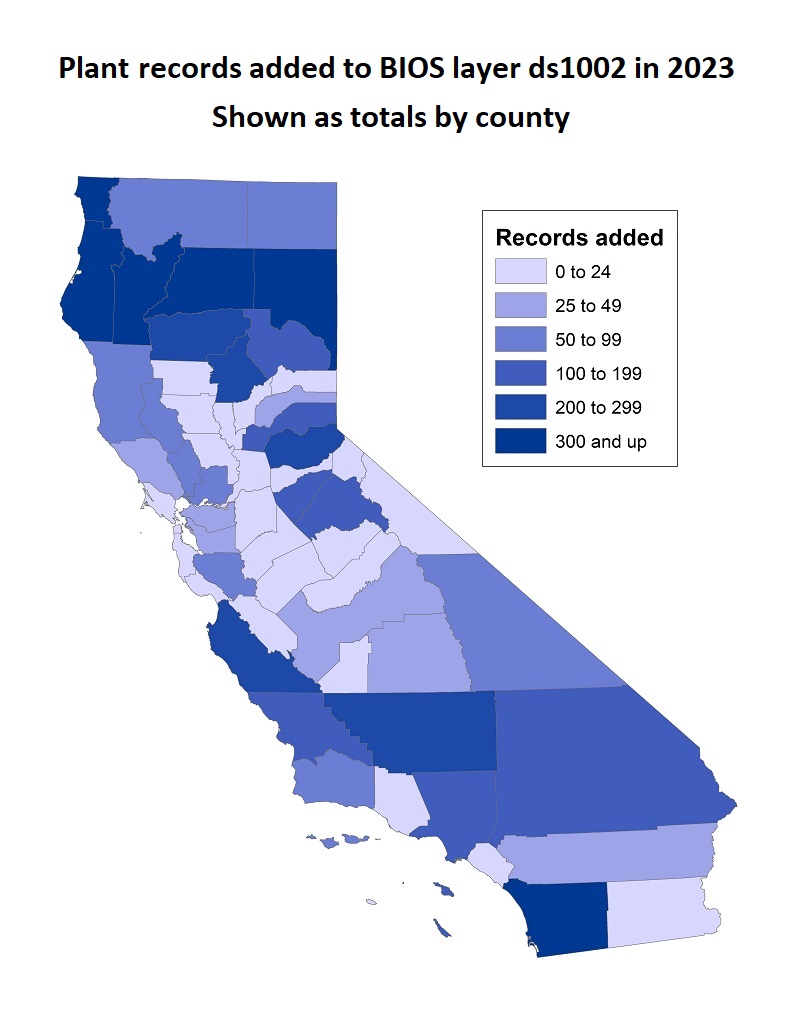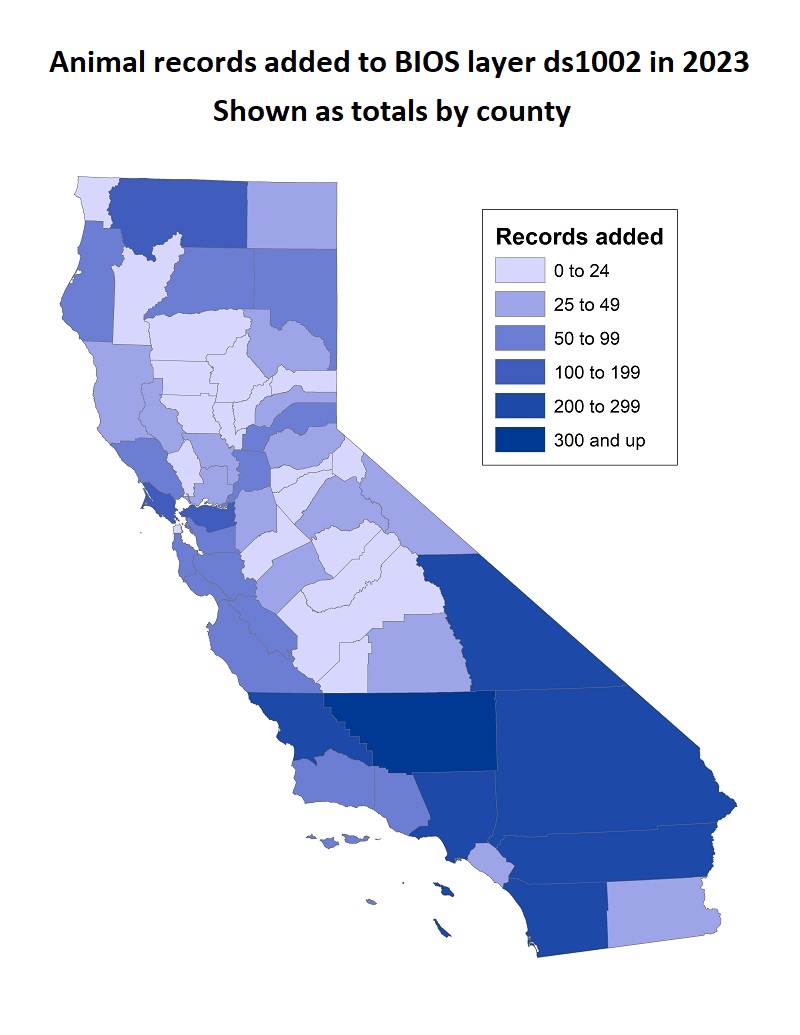Some of our keen-eyed users may have noticed a drastic uptick in the number of records in the BIOS layer named Unprocessed data from the Online Field Survey Form [ds1002]. This is because CNDDB was able to hire new temporary staff who have been busy reviewing older records which were locked away in our files and inputting the relevant information into the Online Field Survey Form.
All CNDDB subscribers have access to ds1002. Since these records represent unprocessed data, they have not been incorporated into Element Occurrences yet, and will not appear in RareFind. That said, if you zoom to a project site in BIOS you can see Online Field Survey Form records alongside CNDDB element occurrences.
Our new staff added 10,000 records from our older records to ds1002 in 2023. These maps show where those points are located. We plan to add thousands more such records in 2024.


BIOS layer ds1002 contains an additional 29,000 records which were submitted directly by our users over the past 9 years. Using the Online Field Survey Form remains the fastest way to share your data with other CNDDB users, as such submissions become visible in BIOS the following month. It takes time and effort to do surveys for imperiled species. Use our platform to share the results of your hard work!